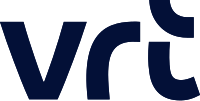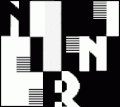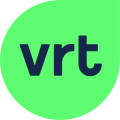VRT (broadcaster): Difference between revisions
| Line 47: | Line 47: | ||
* '''{{ill|VRT MAX|nl}}''', the on demand service. |
* '''{{ill|VRT MAX|nl}}''', the on demand service. |
||
VRT's third television channel, known as ''' |
VRT's third television channel, known as '''{{ill|VRT3|fr}}''', was launched in May 2012. It is not a full-fledged television channel because it has no name, identity or logo. It broadcasts programs from the above channels in a shared schedule under the respective titles "Één+" and "Canvas+". |
||
===Former channels=== |
===Former channels=== |
||
Revision as of 20:21, 16 March 2024
 | |
| Type | Terrestrial radio and television |
|---|---|
| Country | |
| Availability | Belgium (and also parts of the Netherlands, France and Luxembourg) |
| Headquarters | Reyers Tower, Schaerbeek, Brussels 50°51′10″N 4°24′06″E / 50.85278°N 4.40167°E |
| Owner | Flemish Community |
Launch date | 1930 (radio) 1953 (television) |
Former names | NIR (1930–1960) BRT (1960–1991) BRTN (1991–1998) |
Official website | vrt.be |
The VRT (Dutch: [ˌveːjɛrˈteː]) is the national public-service broadcaster for the Flemish Community of Belgium.
History

VRT is the successor to a succession of organisations. The Belgian National Institute of Radio Broadcasting was known as the Nationaal Instituut voor de Radio-omroep (NIR) in Dutch and the Institut National de Radiodiffusion (INR) in French, was founded in 1930 and existed until 1960. This became the Belgische Radio- en Televisieomroep (BRT) in 1960 and the Belgische Radio- en Televisieomroep Nederlandstalige Uitzendingen (BRTN) from 1991 to 1998.[citation needed]
The NIR/INR and BRT (Radio-Télévision Belge, or RTB, in French) had each been single state-owned entities with separate Dutch- and French-language production departments. They were housed in Le Flagey, formerly known as the Maison de la Radio, from when the new building was completed in 1938 until 1974 when the building became too small.[1][2] However, in 1977, as part of the ongoing state reform in Belgium broadcasting became reserved to the language communities rather than the national government in 1977. Accordingly, BRT/RTB went their separate ways in 1977. While the former French half changed its name to RTBF in 1977, the Dutch side retained the BRT name until becoming BRTN in 1991. However, the two broadcasters share production facilities on Auguste Reyerslaan (French: Boulevard Auguste Reyers) in Brussels.[citation needed]
The final renaming to VRT, on 1 January 1998, followed a change in the organization's legal status. From being part of a semi-governmental entity (a parastatale in Belgian terminology) it had, on 16 April 1997, became a publicly owned corporation (NV van publiek recht) in its own right.[citation needed]
As successors to the NIR/INR, VRT and its counterpart in the French Community of Belgium, RTBF, share the Belgian membership in the European Broadcasting Union (EBU) – an association of public broadcasters. Along with RTBF, it is one of the 23 founding members.
With the ending of its television monopoly – marked by the creation of VTM, a commercial television company that initially captured more than half of VRT's audience – the public broadcaster has been compelled to fight back, and part of its successful response has been the use of external production houses such as Woestijnvis, the creator of such formats as The Mole (De mol) and Man Bites Dog (Man bijt hond).[citation needed]
Television channels
Television channels are transmitted on:[3]
- Cable: analog and digital on all Belgian and Dutch cable providers;
- IPTV to all major Belgian DSL providers (Proximus, Orange, Scarlet);
- Satellite with paid TV Vlaanderen subscription (encrypted DVB-S2 using SES Astra network).
- Terrestrial with paid TV Vlaanderen subscription (encrypted DVB-T2 using Norkring network) in Flanders and paid Digitenne subscription (encrypted DVB-T2) in the Netherlands. Free-to-air DVB-T broadcast by VRT was discontinued on 1 December 2018.[4][5]
Current channels
- VRT 1, the main channel, formerly known as Eén. Started in 1953 on VHF channel 10. In PAL colour since 1971. In 1977 the transmission standard changed from Belgian 625 to European CCIR) standard.
- VRT Canvas, the quality TV channel. Began broadcasting in December 1997, originally timeshared with Ketnet before it became a standalone channel in May 2012.
- Ketnet, the children's channel launched in May 2012. Formerly timeshared with Canvas's channel from 6 a.m. to 8 p.m.
- Sporza, is a multimedia brand and sports division. It is name given to the sport's programming broadcast on the above channels and as a program on Radio 1. It was originally created as a third standalone channel that was broadcast temporarily for 96 days in summer 2004 and was also a radio station (the successor to 927Live) from May 2004 until October 2017. During major sports events (such as the Olympics) it is not uncommon for two or more channels to simultaneously air Sporza.
- VRT NWS, the news service.
- VRT MAX, the on demand service.
VRT's third television channel, known as VRT3, was launched in May 2012. It is not a full-fledged television channel because it has no name, identity or logo. It broadcasts programs from the above channels in a shared schedule under the respective titles "Één+" and "Canvas+".
Former channels

- BRTN TV2, the broadcasters second channel, was launched on 26 April 1977 as BRT TV2. The channel offered a daily current affairs program (Terzake), an evening news bulletin (Het Journaal), arts and cultural programs alongside extended broadcasts of major sporting events, such as the Olympic Games, football and cycling races. Children's programs and family-friendly films were broadcast in the morning and afternoon, ending around early evening often in collaboration with Nederlandse Onderwijs Televisie (NOT) (Netherlands Educational Television). It was broadcast until 30 November 1997, when TV2 was closed and ceased transmission. On 1 December 1997, BRTN TV2 was split into two distinct time-shared channels: BRTN Ketnet and BRTN Canvas. The two channels were part of BRTN until 1998 and were split in May 2012; Canvas and Ketnet are still broadcasting as part of VRT2, the official umbrella name for the channels, Sporza and the small Flemish church broadcasters.
- OP12 (Dutch for: on twelve) was a third channel used as a backup in the event of primetime shortage, mostly used for excess sports and culture programs. It was launched in 2012 but due to financial cutbacks was discontinued in 2014.[6]
- BVN was a joint Dutch-Flemish TV station for international audiences; some VRT programmes aired as part of BVN's schedule. VRT left the BVN venture in July 2021; the channel is currently owned exclusively by the Dutch public broadcaster NPO and airs an exclusively Dutch schedule.
Radio channels
The VRT broadcasts radio channels in both analog format (FM) and digital format (using DAB+). All channels are also broadcast live over the Internet at radioplus.be.
International broadcasting was done via VRT's Radio Vlaanderen Internationaal (RVi).
Regular channels
- Radio 1 – info channel
- Radio 2 – Flemish channel
- Klara – classical channel
- StuBru – alternative channel
- MNM – hit channel
Digital and streaming-only channels
- Klara continuo – uninterrupted classical music
- MNM Hits – uninterrupted popular music
- VRT NWS – latest news programme continuously repeated
Streaming-only channels
- VRT Radio 1 Classics – uninterrupted classic songs
- VRT Radio 1 Lage Landen Lijst
- VRT Radio 2 Bene Bene – uninterrupted music from Flemish artists
- VRT Radio 2 Unwind
- Ketnet Hits – uninterrupted kids' music
- MNM Hits – the music you love
- MNM R&Beats – uninterrupted urban music
- MNM Throwback – uninterrupted popular music from the past
- StuBru De Tijdloze – uninterrupted alternative classics
- StuBru Hooray – uninterrupted hip-hop music
- StuBru Bruut – uninterrupted heavy music
- StuBru UNTZ
- StuBru Vuurland
TMC
They also have a Traffic message channel (TMC) service transmitted on VRT Radio2.
Innovation
Through open innovation, VRT explores new technologies and applications in a constantly evolving media context. The innovation department works together with partners such as start-ups, universities, broadcasters, and media organisations on several (funded) projects. To put innovation into practice, VRT consistently tests new prototypes on the production floor, while working closely with both media professionals and end users.
VRT Sandbox supports innovation within VRT and the media sector by organising collaborations with start-ups, scale-ups and entrepreneurs. Within VRT Sandbox, scale-ups get the chance to test, validate or develop their products on VRT's production floor, with access to the infrastructure and production teams. In addition, VRT Sandbox leads a programme in which scale-ups and media organisations develop future media applications together. This allows European and Flemish scale-ups to tailor their solutions to the needs of the media sector.
With the French-speaking public broadcaster RTBF, VRT also leads the international Future Media Hubs network to foster collaboration and knowledge sharing.
Logo history
-
NIR logo (1953–1960)
-
VRT's third and older logo used from 1967 to 1979.[7]
-
BRT logo (1979–1991)[8]
-
BRTN logo (1991–1998)
-
VRT logo (1998–2002)
-
VRT's sixth logo used from 7 January 2002 to 21 June 2017.
-
VRT's seventh and previous logo from 22 June 2017 to July 2021.
-
VRT's eighth logo from July 2021 to 29 August 2022.
-
VRT's ninth and current logo as of 29 August 2022.
See also
- List of radio stations in Belgium
- List of television stations in Belgium
- Bert De Graeve, former CEO
- Tony Mary, former CEO
References
- ^ "Le Flagey, the former Maison de la Radio". Brussels Life. 5 July 2012. Retrieved 9 May 2021.
- ^ "The Flagey Building". Flagey. Retrieved 8 May 2021.
- ^ "Televisie kijken" [Watching television] (in Dutch). VRT.
- ^ "VRT stopt eind dit jaar met uitzenden via DVB-T" [VRT will stop broadcasting via DVB-T at the end of this year] (in Dutch). VRT News. 17 May 2018.
- ^ "VRT blijft via de ether uitzenden" [[UPDATE] VRT continues to broadcast over the air] (in Dutch). Total TV. 10 July 2018.
- ^ "OP12". VRT. Archived from the original on 3 June 2016. Retrieved 9 May 2016.
- ^ "Séquence nostalgie: l'oreille de Michel Olyff disparaît du paysage audiovisuel belge…". Telepro.be. 23 June 2015.
- ^ BRT TV1 logo + Weerbericht (07.01.1979) on YouTube
External links
![]() Media related to Vlaamse Radio- en Televisieomroeporganisatie at Wikimedia Commons
Media related to Vlaamse Radio- en Televisieomroeporganisatie at Wikimedia Commons
- Official website (in Dutch)
- VRT NWS(in Dutch) news site of VRT
- English B2B website VRT International
- 16 April 2008 'Belgian pubcaster to launch HD Channel' via Broadband TV News


![VRT's third and older logo used from 1967 to 1979.[7]](http://upload.wikimedia.org/wikipedia/commons/thumb/a/a7/BRTN_logo_1960.png/120px-BRTN_logo_1960.png)
![BRT logo (1979–1991)[8]](http://upload.wikimedia.org/wikipedia/commons/thumb/c/cf/BRT_old_logo.png/118px-BRT_old_logo.png)





